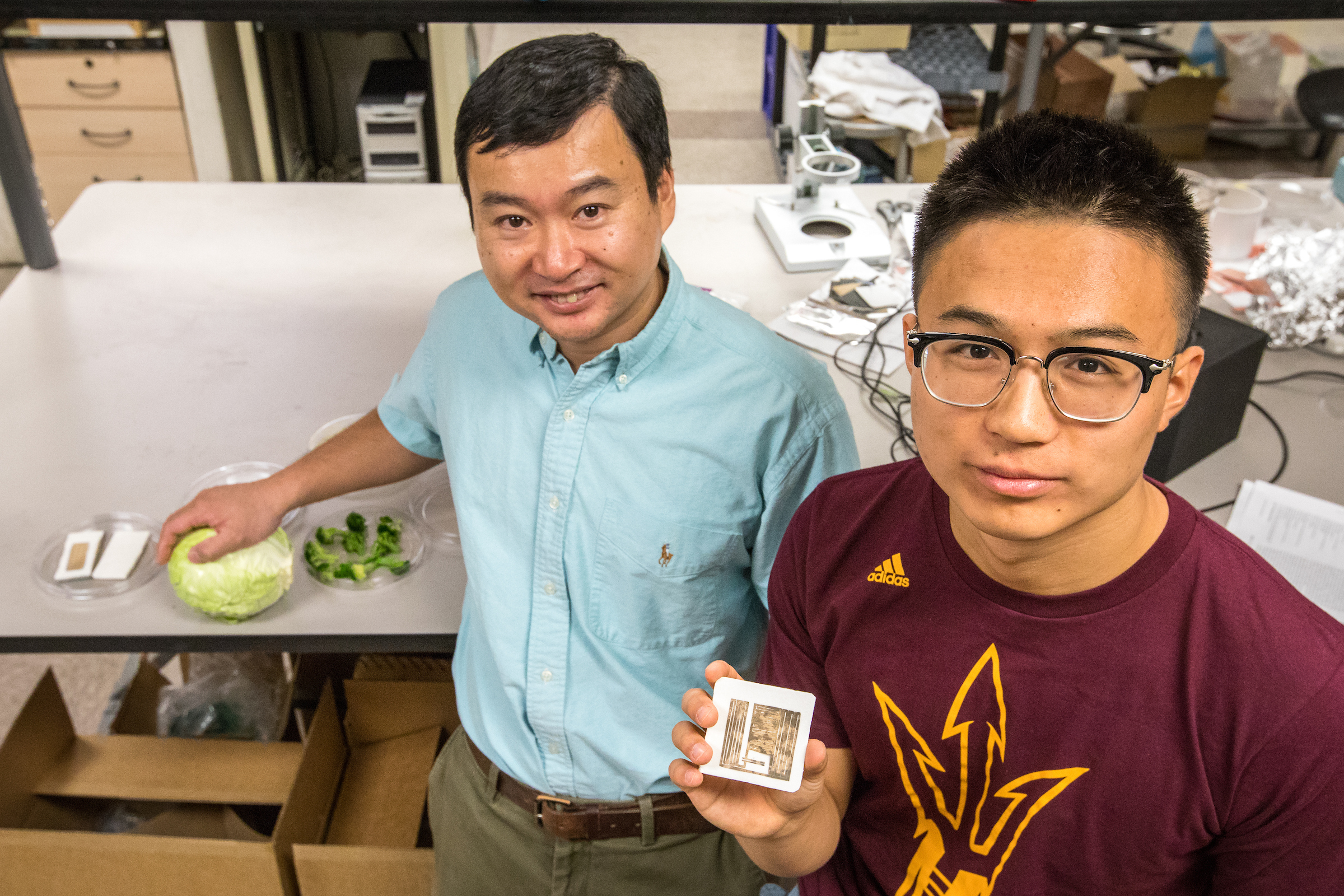Electronics can be wearable and implantable. Soon they’ll be ingestible.
An Arizona State University professor has created a tool kit of food-based electronics that will be used to create edible medical devices.
Hanqing Jiang and his team of researchers last year invented an edible supercapacitor made from foods like activated charcoal, gold leaf, Gatorade, seaweed, egg white, cheese, gelatin and barbecue sauce that stored and conducted electricity.
Food as an electrical component is just beginning to be studied. Now, after exhaustive research, Jiang and his team have created a list of foods that conduct or insulate electricity and have measured to what extent they carry out those roles.
Foods with lots of salt (like butter) and water (like fresh meat and vegetables) conduct electricity well. Carbonized cotton candy and flour can be used to build resistors. Vegetables with lots of cellulose, like broccoli and cabbage, can generate an electric charge. The researchers used the Food Guide Pyramid.
“You have to do something no one has done in the past,” said Jiang, a professor of mechanical engineering in the School for Engineering of Matter, Transport and EnergyThe school is part of the Ira A. Fulton Schools of Engineering at ASU..
The tool kit describes the properties of food-based electronic materials, how to create devices like an edible sensor and microphone, basic components and devices with integrated sensing and wireless signal transmission.
“This really does open the door for us for a much broader spectrum,” Jiang said.
ASU Professor Hanqing Jiang and doctoral student Haokai Yang are advancing their group's research on edible supercapacitors that will one day be digested and used for non-evasive diagnostics and treatments for gastro-intestinal issues. Yang holds a large pH sensor, which will soon be made much smaller. Photo by Charlie Leight/ASU Now
Jiang and his team are now working on the next step: a functional device. They have two in mind: one that will study bacteria in the gastrointestinal tract and another bowel implant that is dissolvable.
It’s not easy. “The human body is very complicated,” Jiang said.
The devices they have built work in proof of concept. Bowel sounds from a 70-year-old man with abdominal pain were fed to a loudspeaker and recorded with the edible microphone. It successfully reproduced the original testing sound.
Edible electronics can’t compete with silicon-based devices, but they can solve a lot of problems. Ingestible electronics need to be passed from the body. If they break, there’s a possibility of contamination. Implantable electronics require surgery. Biodegradable electronics exist, but they have low energy density and battery size is limited.
Jiang envisions doctors doing real-time monitoring of the gastrointestinal tract. Edible electronics have the potential to revolutionize biomedical technologies and devices, he believes.
Research does have one painless aspect: “We can just eat it afterwards,” said Haokai Yang, a lab member and doctoral candidate studying mechanical engineering.
You can read the paper here: http://onlinelibrary.wiley.com/doi/10.1002/admt.201700181/full
More Science and technology

Science meets play: ASU researcher makes developmental science hands-on for families
On a Friday morning at the Edna Vihel Arts Center in Tempe, toddlers dip paint brushes into bright colors, decorating paper fish. Nearby, children chase bubbles and move to music, while…

ASU water polo player defends the goal — and our data
Marie Rudasics is the last line of defense.Six players advance across the pool with a single objective in mind: making sure that yellow hydrogrip ball finds its way into the net. Rudasics, goalkeeper…

Diagnosing data corruption
You are in your doctor’s office for your annual physical and you notice the change. This year, your doctor no longer has your health history in five-inch stack of paperwork fastened together with…



